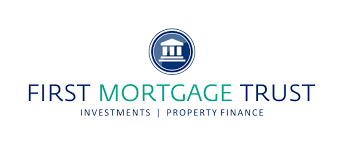Author: homeloan
The property market takes a breather…

Blogs
HLANZ Blog
Welcome to our blog – News, what’s hot and what’s not, be informed!

The property market takes a breather…
Take a look at First Mortgage Trust’s latest newsletter – Issue 77 – which includes a FAQ section where CEO, Tony Kinzett, answers questions about the recent change in management, annualised returns for the Quarter ending 31 March 2019, the company’s Youth Sponsorship activities, new office refurbishments, and more!
Click here to read more about First Mortgage Trust’s first steps into 2019!

5 Reasons why you should use a Mortgage Adviser

Blogs
HLANZ Blog
Welcome to our blog – News, what’s hot and what’s not, be informed!

5 Reasons why you should use a Mortgage Adviser
Written by Anthea Mallasch
At Home Loan Advisers NZ we aim to provide friendly and honest mortgage advice through our comprehensive mortgage service for first home buyers, home movers, people looking to refinance, property investors and self-employed.
We understand that your mortgage is one of the largest investments you will ever make – and using a mortgage adviser can help ease the process by providing honest information in an easy to understand format to ensure you get the best possible rates the market can offer!
Here are 5 reasons why you should use a mortgage adviser when looking to apply for a home loan:
1. The Mortgage Adviser Network:
Mortgage advisers have a large number of contacts and a network of lenders which can be beneficial for you in getting the best possible mortgage rates. Having multiple lenders competing for your home loan means there is more potential to save!
2. Mortgage Advisers are experts:
This is what they do every day – they know what’s happening in the current market, different types of mortgage products there are, and the best possible rates out there. Because of this, they are aware of all potential hazards or pitfalls which may occur during your home loan process, so sometimes it’s best to “leave it to the experts!”
3. Mortgage Advisers work out how much you can borrow:
Using a mortgage adviser means they can work out how much you can borrow as it varies depending on the lending provider or bank – so it is crucial to know which one suits your situation best. This can be especially useful if you’re self-employed.
4. Mortgage Advisers save you time (and stress!):
Going back and forth between mortgage lenders to find the best possible option can often be exhausting, time consuming, and frustrating. Investing in a mortgage broker means they put in all the hard yards for you – not only will this save your time, but it will also ensure the loan application process runs smoothly for a positive experience.
5. Mortgage Advisers provide a mobile service:
Mortgage advisers, unlike traditional banks, have the ability to come whenever suits you best. We are flexible! We understand the stress our clients are often put under while working full-time and wanting to buy a new home, so having the convenience can often be better than trying to juggle around multiple responsibilities at once!
Time to Digitize?

Blogs
HLANZ Blog
Welcome to our blog – News, what’s hot and what’s not, be informed!

Time to Digitize?
Written by Anthea Mallasch
As the average number of documents requested by banks rises to an additional 3 to 4 documents per borrower, it’s no wonder mortgage advisers are swimming neck-deep in a paper-filled pool mistaken by an ‘office’ during the fact find process.
This has led towards the growing demand of digitized documents from clients to help ease the complex procedure of securing a home loan – and according to NZ Adviser, mortgage brokers have finally found the (virtual) jackpot!
James Sampson, CEO of file sharing platform FileInvite, says a large volume of documentation goes through the software every day. In an interview between Sampson and NZ Adviser, the CEO stated that in the last half of 2018 the number of documents being processed through FileInvite increased by 35% per loan application.
“That lines up with the lot of feedback that we get from advisers, specifically around the complexity of what the financial lending institutions are requesting. Off the back of the Royal Commission, we’ve seen increased requests for validation of living expenses, and fact finding has been a lot more rigorous. We’ve tried to digitize that fact finding process as much as possible.”
Although FileInvite was originally targeted towards the web design sector, the overwhelming response from mortgage brokers means that the company has now created an adviser-specific feature within the application process. Majority of the company’s key focuses are now centered on the mortgage adviser space.
“When we went to market with our original platform which was focused on web design, the mortgage brokers jumped on as the documentation process was their biggest headache…We’ve really worked closely with the advisers since then and listened to their feedback, and now we’ve developed features specifically for the mortgage broker space,” Sampson says.
Not only will the ability to digitize documentation benefit the advisers, but the clients as well. Providing an online option with the ability to digitally sign documents within a secure environment, that keeps everything out of adviser inboxes, can help create a smooth loan application experience. Not to mention the benefits this would have towards compliance.
“It’s also about the client experience and referrals, so you want your client to have a seamless experience as possible,” says Sampson.
Garth Hinton, a member of FileInvite’s new lead investor, Flying Kiwi Angels, joins the board as Director and Chair.
“FileInvite is addresses a real pain point among advisor-based businesses and over time will reduce the costs throughout the whole value chain for a process like a loan,” he tells Scoop.co.nz.
Overall, the benefits on going digital significantly outweigh the over-use of paper. It is clear that we are heading towards a world where everything is digitally processed and we can finally kiss goodbye the guilty overflowing bins sitting in the corner of the office and advisers can pull their heads up from that paper-filled pool (A.K.A. the office).
Housing Market Upturn

Blogs
HLANZ Blog
Welcome to our blog – News, what’s hot and what’s not, be informed!

Housing Market Upturn
New Zealand’s housing market has bounced back in 2018, with a 7.3% rise in house prices recorded this March. The new apartment market in Auckland saw a 30% drop over the second half of 2017 according to research by Colliers International, but new figures show that the market is steadily strengthening and sales and rental demand remains high.
New apartments in the Auckland area are valued at approximately $1.07m, and saw a 3% drop in asking price in the second half of 2017. According to national director Pete Evans, the prolonged election period resulted in an overall downturn for Auckland’s residential market, and the study also indicated that the Central Business District (CBD) was the main cause of the 3% fall, with prices dropping from $1.3m to $1.1m over a six month period.
The housing market across the city fringe has seen a stronger performance, with areas such as Epsom and the Eastern Bays continuing to see price growth. Prices also went up across the suburban market, with areas such as Albany, Hobsonville and Onehunga seeing a 5% increase over the first half of 2017.
According to Evans, the current trends are to be expected for a cyclical market which inevitably peaks and troughs over time.
“We are seeing a new level of high-quality apartments in the city bring with larger, better designed and finished apartments targeted at owner occupants,” says Evans. “It is typical that after a strong growth period of three years that the market will cool and stabilise, which is what occurred in 2017. The market for new apartments peaked in the first half of 2016 and has been decreasing ever since.”
“Sales activity will now be bolstered by banks being more active in lending, particularly to owner-occupiers of new apartments.”
Evans also stated that the number of new projects entering the market will likely decrease, which will trigger higher demand for existing projects. Collier International’s study found approximately 18 months of remaining supply, and Evans believes the market will remain undersupplied for at least three years.
“As the city grows and people continue to embrace urban living, Auckland needs new apartments in good locations,” he says.
Sellers and Real Estate Agents

Blogs
HLANZ Blog
Welcome to our blog – News, what’s hot and what’s not, be informed!

Sellers and Real Estate Agents
Data for a landmark new survey to understand how property sellers feel about real estate agents is currently being collected by CoreLogic.
The survey into Kiwi agents will seek to understand the experiences of consumers when selling their property and how well (or poorly) agents are meeting customer expectations.
It follows from research CoreLogic conducted about the Australian market which discovered that while real estate agents suffer generally from a poor public reputation, 66% of the vendors surveyed rated the overall experience of selling their home positively with 31% claiming it was Excellent and 35% rating it as Good. The survey shows 68% of respondents would recommend their agent to friends or family.
Kylie Davis, the Head of Content at CoreLogic, said the survey was expected to identify some of the challenges real estate agents are facing in a market landscape that is being affected by technology and an expectation of instant help.
“But what I am really looking forward to understanding is what differentiates the really great agents for sellers from the average agents,” Ms Davis said. “By capturing those insights, we’ll be able to identify the skills that agents need to really excel, and the industry can start to deliver more targeted training that encourages adoption of those behaviours.”
The Australian research identified that vendors wanted agents to improve their professionalism by providing better feedback throughout the sales process, being accountable and demonstrating how they arrive at the sale price, be friendly and approachable and provide vendors with advice and feedback on how to best sell their home.
“It will be interesting to see what the expectations of Kiwi sellers are and how they compare,” Ms Davis said.
Reserve Bank targets investor lending

Blogs
HLANZ Blog
Welcome to our blog – News, what’s hot and what’s not, be informed!

Reserve Bank targets investor lending
All major Banks have followed the Reserve Banks directions and have instigated a LVR ratio of 60% on residential property investors (i.e. a deposit of 40%).
The LVR to owner occupiers is 80%. This is nation wide.
Loans that are exempt from the existing LVR restrictions, including loans to construct new dwellings, would continue to be exempt.
New Meth Contamination Levels Revealed

Blogs
HLANZ Blog
Welcome to our blog – News, what’s hot and what’s not, be informed!

New Meth Contamination Levels Revealed
By Miriam Bell for Landlords.co.nz
It’s been a long time coming but the much anticipated new meth testing and decontamination standard is finally here – and it’s good news for landlords.
Standards New Zealand released the new testing and decontamination meth standard, which covers properties used as meth labs as well as properties where meth has been used, today.
The most significant change in the new standard is that a new contamination level of 1.5 micrograms per 100cm2 limit has been set.
Under the old guidelines, the limit was 0.5g micrograms per 100cm2.
While the draft standard released in December last year proposed a three level approach to contamination limits, the new standard sticks to a single level approach.
But it establishes clear methods for sampling and testing and competency requirements for samplers and decontamination contractors.
This is considered critical given ongoing reports of inconsistent tests and excessive decontamination costs.
The standard will also require accreditation for people carrying out testing for detailed assessments and recognised training courses for testing and decontamination operators.
Fueled by regular horror stories about meth contaminated properties, public concern about meth contaminated properties continues to run high.
But Standards New Zealand manager Carmen Mak said the new standard will address concern on the safety of occupants in houses where meth has been detected, as well as providing a benchmark to those in the industry.
“Application of the standard will provide assurance that activities such as screening, sampling, testing, assessing, and decontamination of contaminated properties, and disposal of their contents, are carried out in accordance with good practice.”
The new standard is a huge step forward and will allow New Zealanders to better manage the risks of meth in residential properties, Building and Construction Minister Nick Smith said.
“It will give people greater confidence and certainty, will result in hundreds fewer properties having to be vacated and save millions in unnecessary decontamination work.”
Smith added that the new standard is also an important part of the Residential Tenancies Amendment Bill (No 2), which is currently making its way through Parliament.
The bill, which is intended to allow better management of meth contaminated properties, would give landlords the right to test for meth and enable tenancy agreements to be terminated when levels are unsafe.
NZ Property Investors Federation executive officer Andrew King said it is great that meth contamination limits have been increased to more realistic levels in the new standard.
He hopes the new levels will help to calm the fear surrounding the spectre of meth contaminated properties, but said that there is still a widespread lack of understanding of the whole issue.
“For many people, including Tenancy Tribunal adjudicators, any level of contamination is toxic. That is not the case. The new 1.5 level is conservative – and it is safe. There are likely to be higher levels on bank notes.”
“But the government should run a public education campaign on the new standard so that people learn how the levels are established and what they mean.”
King, who was a member of the meth standard committee, said the fact that testing accreditation will be required should address concerns about inconsistent tests and cowboy operators.
“The new standard means everyone will know what they have to do and how to do it. It provides greater clarity, more consistency and more reassurance to what has been a confused area.”
In a statement, the Real Estate Institute of New Zealand (REINZ) said that the lack of a national standard has led to scaremongering and mis-information for members of the public around testing and decontamination processes.
“The new standard will give property owners, landlords and property managers more confidence around test results which will help protect the health and safety of occupants.
“It is a big step in the right direction towards gaining certainty around whether a property is contaminated and, if so, how it should be decontaminated.”
The new testing and decontamination of methamphetamine-contaminated properties standard can be read here.
Auckland Values No Longer Dropping

Blogs
HLANZ Blog
Welcome to our blog – News, what’s hot and what’s not, be informed!

Auckland Values No Longer Dropping
Jonno Ingerson, Head of Research, CoreLogic NZ Ltd.
I’m surprised.
I’m surprised because the latest monthly QV house price index shows Auckland values rebounding ever so slightly. After peaking in November at an average value of $1,051,387 they then dropped 0.7% over the next three months to $1,043,680 last month. I expected that gentle decline to continue, instead values bounced back fractionally.
Why am I surprised?
I have been talking about how any decline is likely to be shallow and short-lived thanks to continuing low interest rates, a desire of investors to keep investing, and high net migration keeping pressure on the growing under-supply of housing in Auckland.
I am surprised because other measures of activity in the Auckland market have dramatically slowed over the past couple of months.
Our measure of buyer demand has been very weak ever since the RBNZ’s announcement of more lending restrictions hit the streets last July.
That low buyer demand translates into fewer sales, and in February the number of sales in Auckland was the lowest for any February since 1993! Lower than in the years following the GFC in 2008 – 2010.
Lower sales activity is almost always joined by values slowing considerably or even dropping.
Then there is the growing number of listings. While new listings in Auckland have been at about normal seasonal levels, the low number of sales in recent months has meant that the total number of properties for sale in Auckland has grown to the highest level for three years. More choice for buyers also tends to mean less upward price pressure.
Furthermore our buyer classification data has shown a dramatic drop in first home buyer activity in Auckland. First home buyers usually pay a premium over other buyers as they fight hard to secure a property they love. Fewer first home buyers, along with the cash investors who remain in the market and tend to pay under the odds, should be causing prices to fall if the market was following the rules.
Adding to the strain, some of the bigger banks have also tightened their lending criteria far beyond what the RBNZ is requiring of them, making mortgages much harder to get for many buyers.
I had also expected that buyers would be starting to sit back and wait a bit – what with autumn now upon us and the heated policy debate around housing and migration ahead of the spring General Election.
But despite all those things that I thought would have caused Auckland values to keep sliding, they have instead held firm. I was confused and I live and breathe property.
This needed a bit more digging.
I was probably premature in suggesting that the impending election will give home buyers and home owners the jitters. I still think that will happen, but probably only once the election campaigns really ramp up in a few months. We will be into winter by then, which is typically a quiet time anyway.
There are also different patterns emerging across Auckland. The most recent data has seen North Shore and old Auckland City bounce back up, while Manukau and Waitakere continue to slide. Meanwhile, the fringe areas – Rodney, Papakura and Franklin – have just slowed their rate of increase rather than showing any sign of dropping.
Manukau and Waitakere have tended to be stronger first home buyer areas, so with those buyers less active declines in those areas are therefore not unexpected.
North Shore and Auckland City, especially at the mid-range of $800k to $1.5m, have shown more resilience than the top and bottom ends of the market. Likely the buyers active in these markets are less impacted by lending restrictions.
Across the rest of the country, the lending restrictions have not hit as hard as they have in Auckland.
Values in Hamilton had fallen 3% since late last year, but like Auckland, that decline has halted. Part of that initial decline will have been due to a reduction in the number of Aucklanders investing in Hamilton. That had reached a peak of 17% of all sales in the city in late 2015 but with increasing values in Hamilton making the investment equation less attractive, plus added difficulty in securing mortgage funding, that proportion of Auckland investors has fallen back to 11% of all sales.
Tauranga went from rapidly increasing values last year to being flat for the first couple of months of this year, and has now begun to creep back up again. Again there is a high percentage of Aucklanders purchasing in Tauranga, some for investment, but more for moving there. That has not eased, but the ready supply of money for those Aucklanders will have slowed a little.
Christchurch dipped in the latest month but it is too soon to tell if that means anything. The market there is more finely balanced than the other main cities following a period of strong value growth after the 2010 and 2011 earthquakes. A reduction in demand and mortgage credit may well lead to slowly dropping values in Christchurch in coming months.
Wellington and Dunedin are still increasing, just ever so slightly slower than previously. Wellington is experiencing a housing shortage, both for owner occupiers and renters. First home buyers are also very active in the more affordable fringe areas.
All this begs the question as to whether the Reserve Bank’s lending restrictions have either not worked, or have worn off already.
Bear in mind that the Reserve Bank is not specifically trying to lower house prices. They are trying to protect the banks and the wider economy against any potential significant correction in house prices. Making sure that borrowers have larger deposits, and that lending is more prudent are two ways of achieving that. The Reserve Bank’s own stats show that lending to investors has dropped by 35% since the introduction of the restrictions. Job done there.
As for house prices dropping? Well there may be a more lasting impact in Waitakere and Manukau, but elsewhere it looks like we are back to increases. At least for the time being.
As the Reserve Bank said just prior to announcing the restrictions, slowing down the housing market would take a combination of things including increasing interest rates, lower migration, looking at tax treatment for investors, but the biggest influence would be massively increasing housing supply. Other than interest rates, those are not things that the RBNZ can directly influence. Furthermore, none of them have materially changed.
Consequently, the strongest forces that have been pushing up house prices are left to do their job. Yes demand has been reduced, and yes supply is up a little. But not enough. Interest rates, while they have risen slightly, are still low enough to not cause pain. Ultimately we have too many people for the number of houses, and until that is resolved it is difficult to see values dropping.
Should I really be surprised then that values haven’t continued to drop? Perhaps not.

Interest rates in 2017

Blogs
HLANZ Blog
Welcome to our blog – News, what’s hot and what’s not, be informed!

Interest rates in 2017
Kim Mundy ASB Economist
Mortgage rates have risen across the curve since the ASB November’s Home Loan Rate Report.
NZ interest rates are generally affected by a combination of the RBNZ’s Official Cash Rate (OCR), offshore interest rates and banks’ funding environments. While the OCR has remained at a record low, offshore interest rates (especially in the US) have lifted by more than we expected.
At the same time, deposit growth has slowed relative to lending growth. As a result, not only are banks competing to attract and retain deposits (putting a floor under interest rates), banks are having to finance this funding gap in relatively more expensive offshore markets. Despite this, mortgage rates remain low relative to historical averages and current “specials” are even lower for most term rates.
We expect the RBNZ to leave the OCR on hold until late 2018. As the OCR is one factor influencing floating and shorter-term fixed mortgage rates, we are not likely to see the floating mortgage rate and short-term fixed rates decline any further this year.
Further, higher funding costs and increasing global interest rates could see further (but modest) upward pressure on shorter-term interest rates. Upward pressure on longer-term mortgage rates is likely to be slightly more pronounced.
Longer-term rates are more heavily influenced by offshore developments, particularly in the US. US interest rates responded strongly to Donald Trump’s proposed policies and have risen sharply in the months following his election to the US Presidency. This has flowed through to New Zealand long-term interest rates. We expect US rates to remain elevated, and as a result, expect to see further upward movement over time in NZ’s 3- to 5-year fixed mortgage rates.
The RBNZ’s LVR lending restrictions and borrowers The RBNZ introduced a third round of LVR restrictions on 1 October 2016. Nationwide, investors are now required to have a 40% deposit and owneroccupiers (O-Os) are required to have a 20% deposit. Only 10% of O-Os loans can be permitted with a deposit of less than 20%. As a result, the practice of offering “specials” or lower rates on lending with equity in excess of the LVR restrictions is likely to remain in place.
Borrowers should monitor these “specials”, and discuss the options with their mortgage providers when deciding what to do with their mortgage. Identifying the best strategy Personal preferences for certainty and flexibility are also important when choosing a mortgage.
Source ASB Home loan report 2017